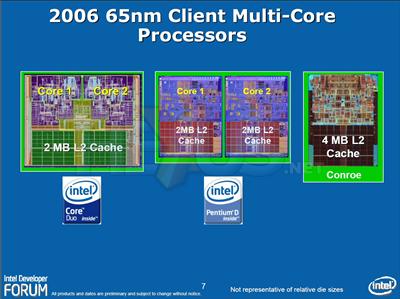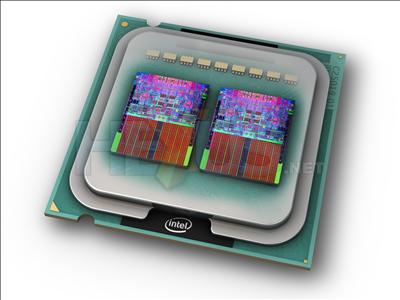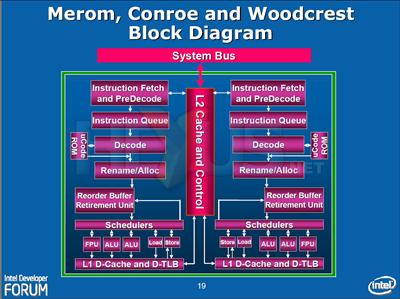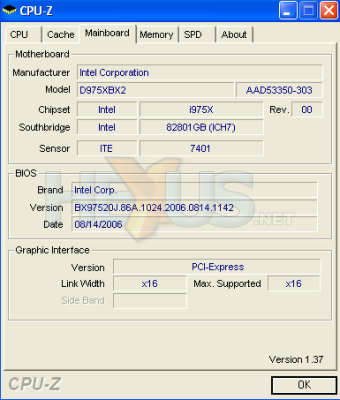Oh my quad!
For once, Intel has stuck with a fairly comprehensible set of model numbers for the new processors, if you already understand what the Core 2 Duo model numbers mean. The QX6700 runs at 2.667GHz, just like the E6700 and the Q6600 runs at 2.4GHz, like the E6600. This carries on down the line, with the Q6400 running at 2.13GHz the same as the E6400. But whereas the latter only offers 2MB of shared cache, its quad-core derivative has the full 2 x 4MB, the same as all the other quad-core parts. That's the case for Q6400 now, but we'll see if Intel sticks to the cache spec. with full-production models, available early next year
Before we let loose our benchmark suite, a tour of Intel’s dual-core line-up is in order. As most people realise, the Pentium D is essentially two Prescott Pentium 4s snuggling up together on the same package, sharing a Front Side Bus. Each core has its own independent allotment of L2 cache, and the only way the two cores can talk to each other is via the FSB. The Core Duo is a lot more sophisticated, with a shared 2MB SmartCache. This can be dynamically allocated between the two cores, so that if one core is doing all the work it can have all of the L2 cache at its disposal. In this respect, the Core 2 Duo is no different, except that it has 4MB of L2 SmartCache rather than 2MB.
Although the Core 2 Extreme has 8MB of L2 cache in total, it doesn’t take the Core 2 Duo’s sharing one step further, pooling all the cache together to serve all four cores. Instead, it’s like a Pentium D using two Core 2 Duos instead of Pentium 4s. The two dual-core processors sit side by side in the package, sharing the FSB. Although the two cores on the same die can dynamically allocate their SmartCache, this can’t be performed across the two dies. The two dies can only talk to each other via the FSB, like the two cores of the Pentium D.
This is where one of the first potential chinks in the Core 2 Extreme’s armour becomes visible. Pre-release rumours abounded that Kentsfield would ship with a 1333MHz FSB like the Woodcrest Xeon 5100 series. But instead these first iterations will remain on the same 1,066MHz FSB as Core 2 Duo. With four cores fighting for time on this bus, it’s a potential bottleneck. However, this is offset by the huge amount of L2 cache available, which reduces the necessity of frequent simultaneous memory calls.
So the Core 2 Extreme QX6700 isn’t so adventurous, other than the obvious excitement that it was possible at all to fit two Core 2 Duo cores manufactured using the 65nm process onto the same socket design as a single Core 2 Duo, or the Pentium 4 before it. The two processor dies have no significant changes architecturally compared to Core 2 Duo, the schematic for which is shown above. Since Core 2 Extreme QX6700 has a thermal design power of 120-130W, similar to the Pentium Extreme Edition 955 and 965, its cooling requirements aren’t any more stringent either, although clearly quite a bit more than the 65-75W of the Core 2 Duo. We hope that slower Core 2 Quads will ship with lower TDPs, matching the precedent set with Core 2 Duo.
However, whilst this is still a LGA775 processor, and in theory works on motherboards with Intel’s 965 and 975X chipsets, not all boards will support the QX6700, even with a BIOS update. Intel’s own D975XBX doesn’t (well, the rev. 304 and upwards does), so we were sent the D975XBX2 aka BadAxe 2 to use instead.
You will have to check whether a particular motherboard supports QX6700, and we expect all the major manufacturers to update their respective catalogues with boards that pass Core 2 Extreme QX6700 certification.













